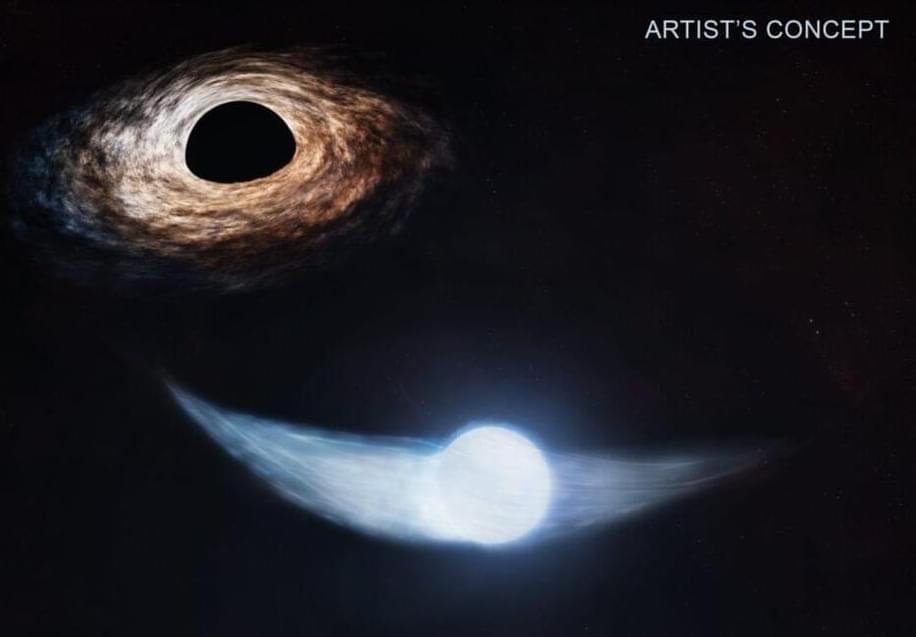A new computational method can identify how cause-and-effect relationships ebb and flow over time in dynamic real-life systems such as the brain.



An international research team has for the first time designed realistic photonic time crystals–exotic materials that exponentially amplify light. The breakthrough opens up exciting possibilities across fields such as communication, imaging and sensing by laying the foundations for faster and more compact lasers, sensors and other optical devices.

“For an existing barrel roof stadium, renovating the opening will be a good solution. Reworking the roof will be much costlier,” Jayanarasimhan explained.
Jayanarasimhan hopes these findings will help the sports community realize that there are better solutions for mitigating wind drift beyond just turning off the ventilation.
“We expect that with this pace of research down the road, wind drift complaints will be negligible from badminton tournaments,” said Jayanarasimhan. “We are preparing to study other roof configurations [and] the deviation of the shuttlecock trajectory in different wind directions and conduct a case study of the existing indoor badminton stadiums.”


A black hole in the MAXI J1820+070 system ejected about 400 million billion pounds of gas in twin jets—equivalent to 500 million times the mass of the Empire State Building.
In a significant astronomical discovery, NASA’s Chandra X-ray Observatory captured a rare phenomenon: a black hole ejecting massive jets of material at nearly the speed of light. This black hole is part of the binary system MAXI J1820+070, positioned approximately 10,000 light-years away, which is relatively close in cosmic terms. This proximity allowed detailed observations that contribute to our understanding of how black holes interact with companion stars.
The MAXI J1820+070 system features a black hole about eight times the mass of the sun, drawing material from a companion star roughly half the sun’s mass. This process creates an accretion disk—a luminous sphere emitting bright X-rays as material is funneled toward the black hole. While some gas is absorbed, some is expelled in powerful jets that travel in opposite directions.

Since the initial James Webb Space Telescope photographs were released in July, our feeds have been inundated with breathtaking images of space, ranging from amazingly detailed images of Jupiter to the furthest distant known star.
This is an updated (quotes and sources) version of the previous article.
Webb has done it again, this time capturing an almost perfect Einstein ring from a distance of 12 billion light-years. And we can’t take our eyes off them.

Astronomers have found a supermassive black hole ejecting a jet of energy at nearly the speed of light. This event, called AT2022cmc, is the most distant tidal disruption event (TDE) ever recorded, taking place 12.4 billion light years away from Earth. The international team of researchers shared their findings in papers published on November 30 in Nature and Nature Astronomy, noting that this TDE was observable due to the intense brightness of its jet and the direction it pointed—right toward Earth.
Igon Andreoni, an astronomer at the University of Maryland and co-leader of the study, emphasized how unusual it is to witness such a jet, as it must be aimed almost directly at Earth for detection. The light from AT2022cmc reached Earth after traveling across space for approximately 8.5 billion years, implying that this event happened when the universe was just a third of its current age.
The observation has led researchers to propose that the black hole involved was spinning at a high rate, which likely contributed to the formation of the jet. Despite its classification as “supermassive,” this black hole’s mass, estimated at a few hundred million times that of the Sun, is typical for black holes at the centers of galaxies.

Magnetic resonance imaging (MRI) is a fundamental tool in modern medicine, offering detailed views of internal organs and tissues. These large, tube-shaped MRI machines, commonly seen in hospitals, utilize powerful magnets to analyze and visualize the density of water and fat molecules within the body.
In addition to these molecules, other substances like metabolites can also be mapped, but their concentrations are often too low to produce clear images. To overcome this limitation, a technique known as hyperpolarization is employed to enhance the magnetic resonance signal of these substances, making them more visible during MRI scans.
Hyperpolarization involves preparing a substance outside the body in a state where its magnetization—key to creating MRI images—is near its maximum. This process can boost the signal by thousands of times compared to its natural state. Once hyperpolarized, the substance is injected into the patient and transported to the target organ or tissue. However, before this can happen, it is crucial to confirm that the substance is adequately hyperpolarized through rigorous quality control processes.


Satellite Data Reveals How Environment Shapes Kids’ Brain Health https://neurosciencenews.com/environment-brain-development-28026/
Adverse childhood experiences can lead to adult symptoms of anxiety and depression, mediated by life history strategies, according to a study published in Biodemography & Social Biology.
Existing research underscores the psychological impact of early-life adversity, with theories across cognitive, behavioral, and evolutionary psychology exploring these long-term effects. The life history theory, specifically, offers insight by framing adverse childhood experiences (ACEs) in terms of fast or slow life strategies, each with distinct reproductive and developmental adaptations suited to one’s environment.
Life history theory posits that individuals exposed to unstable or hostile environments in childhood often adopt a “fast” life strategy, focusing on early reproduction and risk-taking. In contrast, those in stable conditions tend to adopt “slow” strategies, emphasizing long-term planning and higher parental investment.